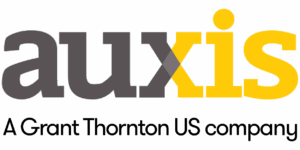Client Profile
Our client is a leading designer, manufacturer, distributor and licensor of a broad line of dress, casual and activewear apparel for men and women, as well as offering a range of accessories and fragrances. The company offers many well-known brands, is publicly traded, with revenues of approximately $1B, and is headquartered in Florida.
Business Challenge
The company engaged Auxis assess and identify opportunities for process efficiencies and cost improvements for its Accounts Receivable (AR) operations. Executive management recognized that many of the processes in this area are manual and the team focuses on low value tasks. Adding to the operational challenges, the company has many different customers, including both big box retailers and small fashion boutiques, resulting in a complex and multi-layered AR function. Executive management realized that the company was very set in its ways and resistant to change, and historically has “thrown people” at problems, rather than focus on process innovation. Auxis was hired to perform a rapid operational assessment of AR function in order to understand the areas of inefficiency within key AR functions where technology enablers and/or best practices could be deployed to improve efficiency and reduce processing costs, identify specific improvement opportunities, and create a business case and roadmap to support future implementation initiatives.
Solution & Approach
Specific “guardrails” were provided by the Client, to ensure the alignment of operational improvement recommendations with the business culture and customer service focus. Additionally, the company required a robust business case, with a rapid payback of less than 12 months for any initiative, and the need to ensure that cost reductions would be achieved without sacrificing operational control or customer satisfaction.
To accomplish this, Auxis conducted a detailed operational review of the Accounts Receivable function, focusing on the following key areas:
- Billing
- Credit
- Collections
- Chargebacks & Deductions
- Cash Application
- Operational Compliance
- Trade Management
After interviewing key process owners and subject matter experts to understand the overall business model, Auxis compiled key cost and operational data to analyze the volumetric transactional flow, and compared that to industry benchmarks. Using this data analysis to help identify the “size of the prize”, With the “strategic guardrails” top of mind Auxis then dove deeper into key process areas, looking for ways to gain efficiencies through process and organizational redesign, as well as automation opportunities. A specific area of focus was robotic process automation (“RPA”), leveraging this emerging technology as a relatively low cost solution to provide a rapid pathway to implementation and ROI.
Results
Auxis was able to identify and prioritize 18 different initiatives to drive process efficiency and cost improvements in the AR function, ranging from “quick wins” that were easier to implement and would yield fast results, to more complex, longer term projects that would require higher levels of investment and longer time to achieve the benefits.
Included in the “quick win” category were several RPA initiatives, including:
- Operational Claims, focusing on automating the processing of certain claim types (proof-of-delivery related), representing approximately 60% of all claims processed.
- The automation of these activities would represent an 81% efficiency gain and a 75% cost improvement, with a payback period of 8 months.
- EDI Errors, with the client’s EDI process generating numerous errors, the robot would focus on certain error types that are fairly well defined, rules-based, and do not require detailed business knowledge to resolve—representing almost 60% of all the errors being generated.
- The automation of these activities would represent a 63% efficiency gain and a 60% cost improvement, with a payback period of 10 months.
- Merchandise Credits, automating the process of entering credit memo details, generally taken from a returns authorization document, for final review and processing by the Billing department.
- The automation of these activities would represent an 86% efficiency gain and a 100% cost improvement (this task would be fully automated), with a payback period of 5 months.
- Manual Orders, automating the processing of manual orders and order modifications, based on information typically provided by the Sales person in an email.
- The automation of these activities would represent a 56% efficiency gain and a 50% cost improvement, with a payback period of 12 months.
Auxis recommended an overall RPA roadmap for the organization, including the design, development, and implementation model, as well as overall governance for all RPA initiatives — starting with a proof-of-concept to demonstrate the operational structure and benefits of this type of process automation.
